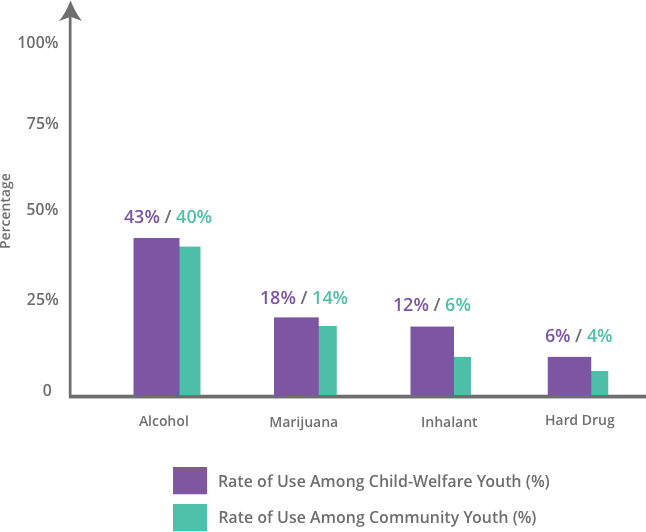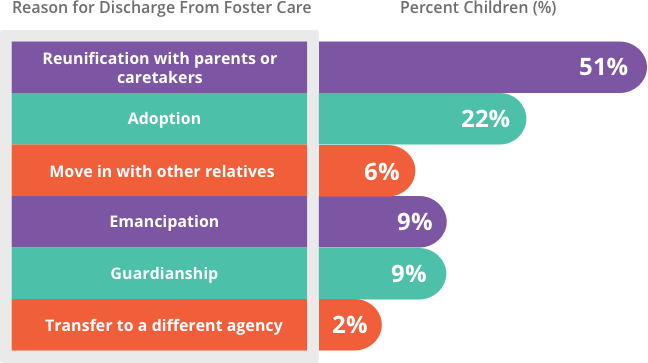Heartbreaking images of parents unconscious from overdose in front of their children circulated on the internet in 2016, highlighting the impact of addiction.
In an interview with the Milwaukee-Wisconsin Journal Sentinel, Teresa Trigg, a mother in recovery, said, “Any responsibility is dropped. I become all about the cocaine.”
Addiction is a chronic and relapsing brain disease that takes over people’s lives. The inherent craving for the drug makes them slaves to their substance use disorder. Addiction doesn’t spare parents whose children need them.
Parents may love their children and want to provide for them, but substance use disorders change the brain structure and lead to destructive behaviors. These behaviors have a ripple effect on children.
Substance Use Cripples Parents
About 12 percent of American children live with parents with a substance use disorder, according to the United States Children’s Bureau. Maternal drug use is one of the five key factors that may lead to a report of abuse or neglect to child protective services, according to a 2011 study published in the journal Child Abuse and Neglect.
“The first type of exposure is prenatal exposure, where mothers are using drugs during their pregnancies. We see a lot of behavioral issues in children younger than the age of five due to prenatal exposure,” Thomas said.
Substance use by expectant mothers has been linked to premature births, low birth weight, slowed growth and physical, emotional, behavioral and cognitive problems.
Drugs and alcohol affect parents mentally and physically, rendering them unable to care for their children. Parents with substance use disorders struggle with controlling their emotions and sometimes lash out at their children. The disease compels them to spend their money on drugs and alcohol instead of food or other household items.
- Substances of abuse cause physical and mental damage to parents
- The influence of drugs and alcohol contributes to a slow response time to a child’s needs
- Parents have trouble managing their emotions, such as anger and impulsivity
- Drugs and alcohol replace the healthy parent-child relationship
- Cravings cause parents to focus more on acquiring alcohol and drugs
- As a result of substance use, parents sometimes go to jail, leaving their children stranded
- Substance use creates a distance from the family and other supportive units
In Ohio, seven out of 10 infants are in child protection services’ custody because of their parents’ opioid use disorder. Environments involving drugs and alcohol may cause an array of problems for children, including stress, depression, anxiety, PTSD, behavioral and learning problems, and attachment issues.
“Drug environments affect the children’s personalities. They look to their parents for a response, and when they don’t get a response, they tend to be agitated and act out.”
The Invisible Victims of Parental Substance Abuse
Kimberly Pleasants from the Children’s Home Society of Florida told DrugRehab.com that foster children from drug-using families might have issues with spatial coordination and depth perception. She added that they often have trouble at school and show signs of learning difficulties.
- Poor cognitive, social and emotional development
- Depression, anxiety and other trauma and mental health symptoms
- Physical and health problems
- Substance use disorders
“Drug environments affect the children’s personalities. They look to their parents for a response, and when they don’t get a response, they tend to be agitated and act out,” Thomas said.
Children from families where drug abuse is present typically have chaotic and unpredictable lives. When parents are under the influence of substances, their primary relationship is with drugs, not their children; they do not meet the basic needs of their children, resulting in neglect.
According to an October 2014 report by the Children’s Bureau, substance-using families battle an array of problems, including mental illness, domestic abuse, unemployment and housing instability. These contribute to stress, which may spiral into domestic abuse against children.
A child whose parents abuse alcohol has a different experience than a child whose parents abuse methamphetamine. Similarly, parents struggling with a prescription drug use disorder may exhibit different behaviors. The children’s safety also depends on the severity of their parents’ substance use disorder.
However, even in homes where substance abuse does not contribute to the mistreatment of children, unstable households may drive children to using substances of abuse in their teenage years. According to the Center for Applied Research Solutions, self-medication with alcohol and other drugs is common among emotionally vulnerable teenagers. It can also lead to prolonged victimization, mental health problems, substance use disorders and self-neglect.
“Children who have been involved in the foster care system have a higher incidence of substance use than the general population in the same age group. They see a pattern. They have been exposed to their parents’ substance use and they sometimes repeat the cycle.”
When Foster Children Turn to Drugs
Parental substance abuse plays a significant role in the rates of substance use disorders among foster care children. Genetics and environment are two means by which these children find themselves caught in the web of addiction. The misuse of drugs and alcohol as a coping mechanism is another.
Joel was six years old when the police removed him and his siblings from an abusive home and sent him to live with his aunt. When he was 15, following arguments with his aunt he would use drugs in his school’s bathroom to escape his troubles. He started with weed and progressed to speed and crack.
When the situation got out of hand, his aunt contacted social services to have him placed in foster care. Joel admitted that although he felt his aunt was giving up on him, she saved him from a lifetime of drug use and crime.
Many children in the foster care system grapple with substance use disorders. When parents abuse or neglect their children, welfare services often remove the children from the family unit and place them in out-of-home living situations.
This can result in fear and confusion, which may lead to substance use disorders.
At least three out of four foster care homes have problems with substance abuse by foster youth, according to the Center for Applied Research Solutions. Children in foster care also tend to have higher rates of illegal drug use than youth who have never been in foster care; 34 percent of foster care children struggle with illicit drug use compared with 22 percent of non-foster care children.
Thomas said the Children’s Home Society of Florida often encounters cases in which children abuse substances.
“Children who have been involved in the foster care system have a higher incidence of substance use than the general population in the same age group,” said Thomas. “They see a pattern. They have been exposed to their parents’ substance use and they sometimes repeat the cycle.”
She added that children in foster care start using drugs and alcohol as early as 13 years of age and the drug use becomes more frequent in their teenage years, emphasizing that some of the children turn to substances to help them cope or avoid the pain associated with their broken families.
Lifetime Substance Use Among Child-Welfare Youth in the United States

Source: National Center for Biotechnology Information
Negative experiences such as trauma, maltreatment, mental illness and early exposure to parental substance use may increase the likelihood of substance use among teenagers. A 2012 study by the Pacific Institute for Research Evaluation revealed that foster care youth tend to engage in substance use a year and a half before their peers.
Children need stability in their lives. Foster care youth often change schools and live with several different families. This lack of permanence takes a toll on their emotional, mental and physical health, which may push them to adopt negative behaviors.
Some foster care children fall behind in school by three to six months every time they transfer to a new school, according to the California Foster Youth Education Task Force. They cannot connect to their teachers and have difficulty maintaining lasting friendships. These factors contribute to poor performance at school, so the children are then transferred to continuation schools, or other alternatives for at-risk students, where the incidence of substance use is high.
 Addiction
Addiction
 Treatment
Treatment
 Faith & Religion
Faith & Religion
 Active Recovery
Active Recovery
 Our Community
Our Community








